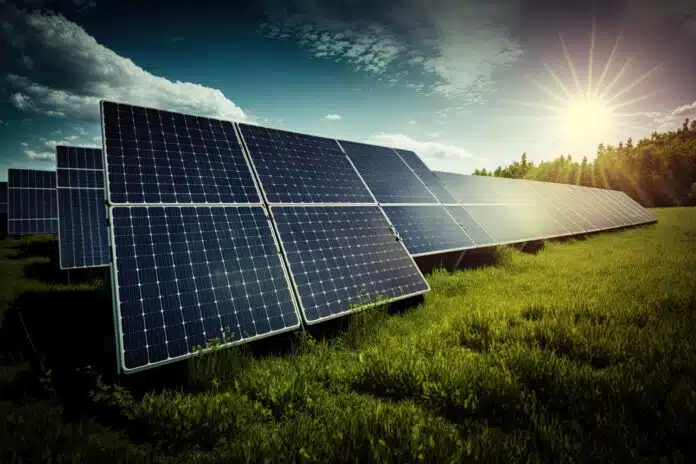
By Ashwini Sakharkar 22 Oct, 2024
Collected at: https://www.techexplorist.com/exploring-bulk-photovoltaic-effect-materials-better-solar-cells/91407/
The bulk photovoltaic (BPV) effect represents a remarkable opportunity to surpass the limitations of traditional p–n junction solar cells. A recent breakthrough study conducted by Japanese researchers has successfully demonstrated the BPV effect in alpha-phase indium selenide (α-In2Se3) along the out-of-plane direction, aligning with previous theoretical predictions. The recorded high conversion efficiency of their α-In2Se3 device holds great promise for the future of solar cell technologies and photosensors.
A profound comprehension of the photovoltaic effect is fundamental to the advancement of solar cell technology. While current solar cells rely on p–n junctions to harness the photovoltaic effect, they are restricted by the Shockley–Queisser limit. This limit imposes a tradeoff between voltage and current, capping the theoretical maximum solar conversion efficiency.
Certain crystalline materials exhibit a fascinating phenomenon known as the bulk photovoltaic (BPV) effect. In materials lacking internal symmetry, electrons excited by light can move coherently in a specific direction, creating “shift currents” and generating the BPV effect. While alpha-phase indium selenide (α-In2Se3) has been predicted as a potential candidate to demonstrate this phenomenon, it has not been experimentally investigated.
To address this gap in knowledge, a research team from Japan, led by Associate Professor Noriyuki Urakami from Shinshu University, embarked on a study to explore the BPV effect in α-In2Se3.
“This material has recently become a hot topic in the field of condensed matter physics, as it might be able to generate a shift current. Our study is the first to experimentally demonstrate this prediction,” shares Prof. Urakami.
The researchers developed a unique layered device featuring a thin α-In2Se3 layer between two transparent graphite layers, which acted as electrodes. These electrodes were connected to a voltage source and an ammeter to measure any generated currents from light exposure. The specific layer arrangement was chosen to focus on the shift currents in the α-In2Se3 layer occurring in the out-of-plane direction.
Following tests with different external voltages and incident light of varying frequencies, the researchers confirmed the existence of shift currents in the out-of-plane direction, validating their earlier predictions. The breakthrough BPV effect was observed across a wide range of light frequencies.
Crucially, the researchers assessed the potential of the BPV effect in α-In2Se3 and compared it to that in other materials.
“Our α-In2Se3 device demonstrated a quantum efficiency several orders of magnitude higher than other ferroelectric materials and a comparable one to that of low-dimensional materials with enhanced electric polarization,” remarks Prof. Urakami. He further adds, “This discovery will guide material selection for the development of functional photovoltaic devices in the near future.”
The research team is confident that their work will lead to a positive environmental impact through advancements in renewable energy generation.
“Our findings have the potential to further accelerate the spread of solar cells, one of the key technologies for environmental energy harvesting and a promising avenue towards a carbon-neutral society,” concludes a hopeful Prof. Urakami.
This study has the potential to open doors for further exploration of the BVP effect, leading to significant improvements in solar cell performance and the design of highly sensitive photodetectors.
Journal reference:
- Noriyuki Urakami, Sho Ozaki, Yoshio Hashimoto. Bulk photovoltaic effect of an alpha-phase indium selenide (α-In2Se3) crystal along the out-of-plane direction. Applied Physics Letters, 2024; DOI: 10.1063/5.0222926

Leave a Reply